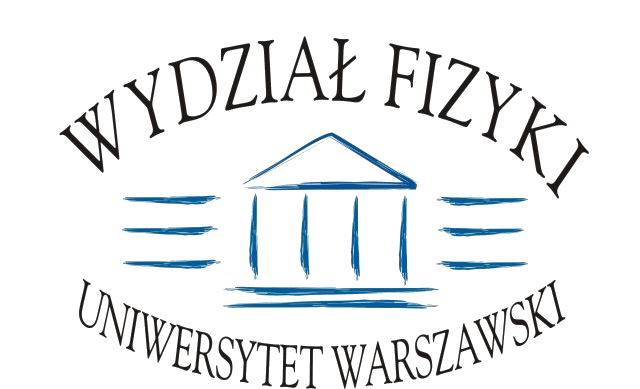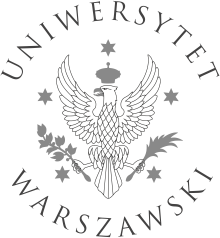2025-06-05 (Czwartek)
mgr Bartosz Pałuba (Instytut Geofizyki, Wydział Fizyki, Uniwersytet Warszawski)
Zastosowanie sieci neuronowych do projektowania nanostrukturyzowanych światłowodów kilkumodowych o słabym sprzężeniu między modami
Abstract: Zastosowanie sieci neuronowych do projektowania nanostrukturyzowanych światłowodów kilkumodowych o słabym sprzężeniu między modami.Współczesna technologia oparta na światłowodach jednomodowych, wykorzystywanych w telekomunikacji, sięga granic swoich możliwości. Z tego względu trwają intensywne badania nad nowymi typami światłowodów oraz nad metodami zwielokrotniania liczby tzw. kanałów, którymi równocześnie można przenosić informacje. Bardzo obiecującym sposobem jest tzw. zwielokrotnienie z podziałem modów (ang. Mode Division Multiplexing), w którym na jeden sygnał przypada jeden mod światła propagującego się wewnątrz światłowodu. Jeżeli dane włókno światłowodowe dla konkretnej długości fali jest dziesięcio-modowe, to potencjalnie można otrzymać dziesięć niezależnych kanałów. Jest jednak jedno „ale”. Mianowicie takie mody muszą być bardzo słabo sprzężone, by energia nie przepływała w istotnej ilości między sąsiednimi kanałami. W przeciwnym wypadku, należy zastosować skomplikowane algorytmy matematyczne oraz złożone i kosztowne systemy elektroniczne, które umożliwią wydobycie ze zdeformowanych sygnałów te pierwotne.Znaczną część moich badań stanowi projektowanie i optymalizacja budowy światłowodów kilkumodowych, w których tzw. nanostrukturyzowany rdzeń zbudowany jest z kilku tysięcy szklanych pręcików dwóch lub więcej rodzajów. Pręciki te można ułożyć w dowolny sposób, dzięki czemu otrzymuje się niestandardowe rozkłady współczynnika załamania, które są niemożliwe do wytworzenia innymi, szeroko stosowanymi metodami. Znalezienie najlepszej struktury dla wybranych zastosowań (w moim przypadku włókien prowadzących kilka, słabo sprzężonych modów) jest niemożliwe w sposób analityczny, a także trudne przy zastosowaniu konwencjonalnych metod numerycznych. Z tego względu w swojej pracy stosuję sieci neuronowe, które najpierw są trenowane na odpowiednio przygotowanych strukturach światłowodów, a następnie same modyfikują rdzenie tak, by otrzymać zadaną liczbę słabo sprzężonych modów. Gdy uda się otrzymać włókno o wymaganych własnościach, może być ono następnie wytworzone i scharakteryzowane w naszych oraz zaprzyjaźnionych laboratoriach.Dotychczas prowadziłem badania nad strukturami trój- oraz pięciomodowymi, wykorzystując proste sieci gęste oraz konwolucyjne. Otrzymane wyniki są bardzo obiecujące i będą potwierdzane eksperymentalnie.
2024-12-05 (Czwartek)
Prof. J.M.F. Ferreira (Sieć Badawcza Łukasiewicz - Instytut Mikroelektroniki i Fotoniki)
Novel bioactive glass microfibers and scaffolds for supervised bone regeneration
Seminarium odbędzie się w w ramach projektu POLONEZ BIS 1 nr 536651 (BAGBONE), wspieranego przez Narodowe Centrum Nauki
Project information:
Team: J.M.F. Ferreira,a,b* R. Buczyńskia, P. Gołębiewskia H.R. Fernandesb, Anuraag Gaddamb, G.E. Stanc, A.C. Popac
a Łukasiewicz Research Network – Institute of Microelectronics and Photonics, al. Lotników 32/46, 02–668 Warsaw, Poland
b CICECO-Aveiro Institute of Materials, University of Aveiro, Santiago University Campus, 3810-193 Aveiro, Portugal
c National Institute of Materials Physics (NIMP), 077125 Magurele, Romania
Abstract
This POLONEZ BIS 1 Project aims at: (i) developing cotton-like microfibers from Alkali-free Bioactive Glasses (or from low Alkali-containing ones) with enough flexibility for being accommodated within bone defects and adapting to their shapes, thus acting as smart and easy tailor-made scaffolds for bone tissue engineering and bone regeneration; (ii) Verify experimentally in vitro the bone regeneration process by developing imaging bundles based on biodegradable glasses devoted to use for monitoring of the bone regeneration process in situ.
The Seminar will highlight the project's motivations, goals, and objectives. It will convey some relevant background on the state-of-the-art in the field, the shortcomings of the actual biomaterials and device scaffolds based on bioactive glasses, and will explain how our strategy and experimental approach will contribute to overcome some existing constraints, enlarge the available scaffolding options and increase the overall performance of the new smart solutions.
We will also report on the work plan and methodology adopted, the existing infrastructure & human resources available, and give an account of the accomplishment of the tasks, the results obtained so far, and its dissemination efforts in the form of scientific publications and participation in several international conferences.
Keywords: Alkali-free bioactive glasses; cotton-like microfibers; scaffolding; imaging bundles; supervised bone regeneration.
Acknowledgments: This research is part of project No. 2021/43/P/ST7/02418, co-funded by the National Science Centre and the European Union’s Horizon 2020 research and innovation program under the Marie Skłodowska-Curie grant agreement No 945339.
Project information:
Team: J.M.F. Ferreira,a,b* R. Buczyńskia, P. Gołębiewskia H.R. Fernandesb, Anuraag Gaddamb, G.E. Stanc, A.C. Popac
a Łukasiewicz Research Network – Institute of Microelectronics and Photonics, al. Lotników 32/46, 02–668 Warsaw, Poland
b CICECO-Aveiro Institute of Materials, University of Aveiro, Santiago University Campus, 3810-193 Aveiro, Portugal
c National Institute of Materials Physics (NIMP), 077125 Magurele, Romania
Abstract
This POLONEZ BIS 1 Project aims at: (i) developing cotton-like microfibers from Alkali-free Bioactive Glasses (or from low Alkali-containing ones) with enough flexibility for being accommodated within bone defects and adapting to their shapes, thus acting as smart and easy tailor-made scaffolds for bone tissue engineering and bone regeneration; (ii) Verify experimentally in vitro the bone regeneration process by developing imaging bundles based on biodegradable glasses devoted to use for monitoring of the bone regeneration process in situ.
The Seminar will highlight the project's motivations, goals, and objectives. It will convey some relevant background on the state-of-the-art in the field, the shortcomings of the actual biomaterials and device scaffolds based on bioactive glasses, and will explain how our strategy and experimental approach will contribute to overcome some existing constraints, enlarge the available scaffolding options and increase the overall performance of the new smart solutions.
We will also report on the work plan and methodology adopted, the existing infrastructure & human resources available, and give an account of the accomplishment of the tasks, the results obtained so far, and its dissemination efforts in the form of scientific publications and participation in several international conferences.
Keywords: Alkali-free bioactive glasses; cotton-like microfibers; scaffolding; imaging bundles; supervised bone regeneration.
Acknowledgments: This research is part of project No. 2021/43/P/ST7/02418, co-funded by the National Science Centre and the European Union’s Horizon 2020 research and innovation program under the Marie Skłodowska-Curie grant agreement No 945339.






